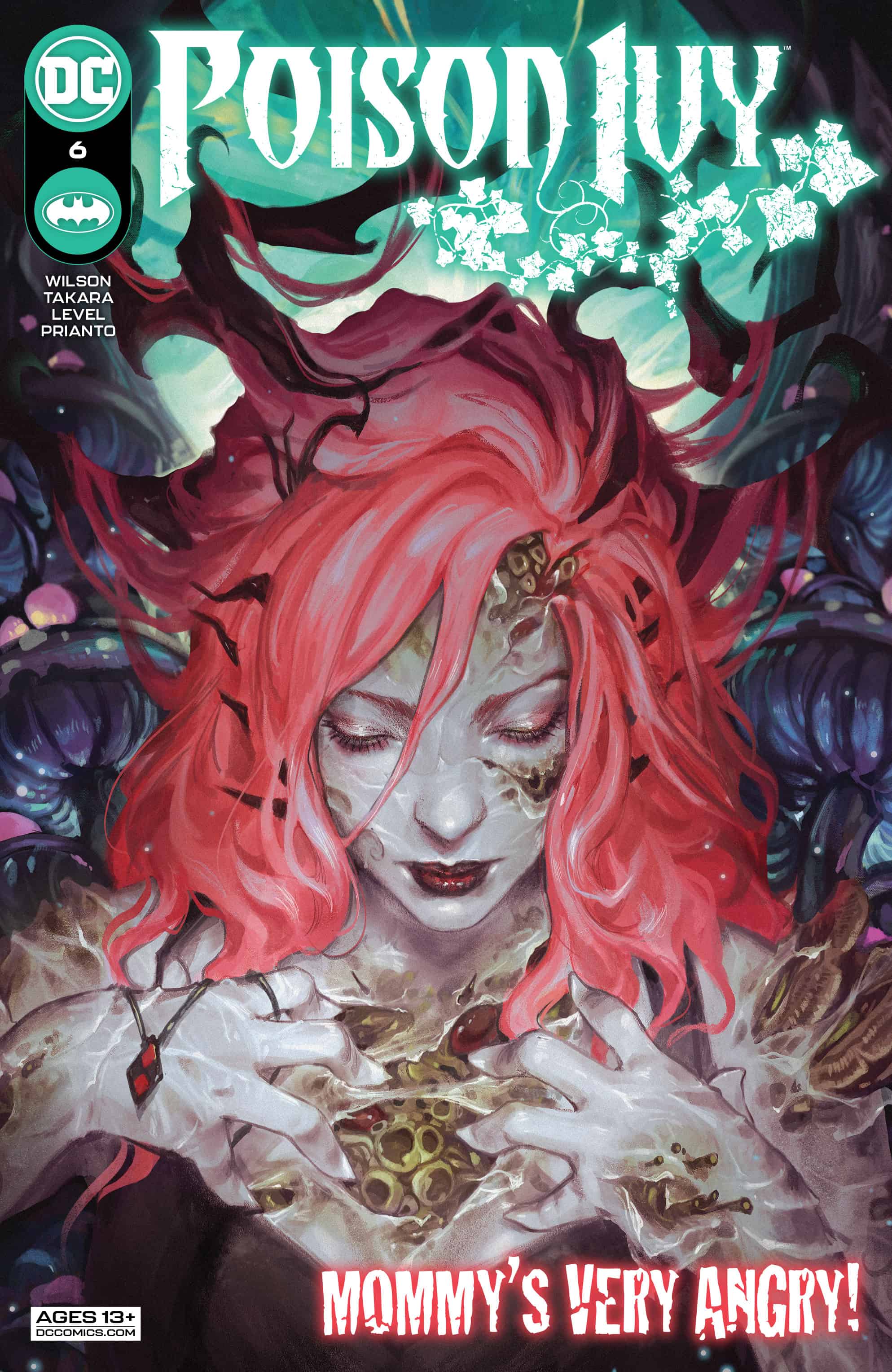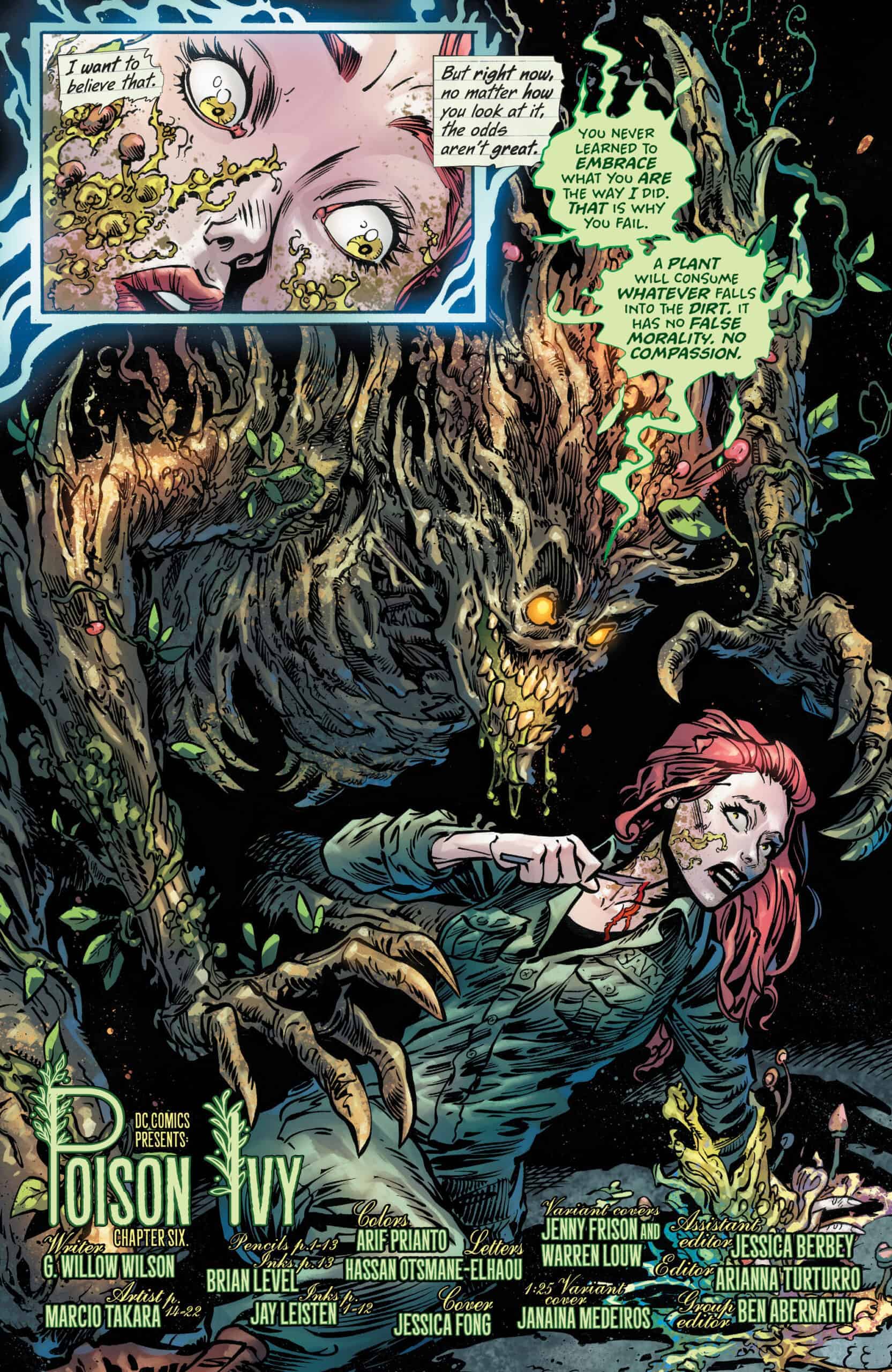Poison Ivy #6

Recap
Poison Ivy is taken to death's door and beyond, as the fungal parasite she's been playing host to causes Ivy to undergo a terrific metamorphosis. Can the world's greatest villain find the strength within her to carry on, or will something...new take her place?
Review
Closing out the first arc of the series, Poison Ivy #6 sees its villain protagonist do a heel-face turn – not for the first time in her history – and leaves her where some readers may wish the series had started. Seeing the error of her ways and listening to her conscience (and also a hallucinated version of Batman), it truly seems as if Ivy is leaving genocide behind her and targeting evil corporations after a few kind strangers restore her faith in humanity.

Thematically, G. Willow Wilson’s writing in Poison Ivy offers a visceral exploration of what it means to give in to climate doomerism, then say “actually, you know what, you’re right – we’re all helpless in the face of ecological disaster and it’s all our fault,” and to eventually kindle the sparks of hope that you may be wrong. It’s not just a relevant subject but one that suits Ivy beautifully in both its sentimentality and righteous anger.
However, Ivy’s character progression in this comic only comes after a heaping spoonful of regression. Ivy starts the comic off by breaking up with Harley Quinn for the nth time and morally backsliding into supervillainy to the point of being cool with child murder. The first arc’s conclusion brings her back to the place where many readers may have hoped the series would begin: with Harley and Ivy together and Ivy going after ecologically harmful corporations (the way she might have done back in Gail Simone’s seminal Birds of Prey run). It’s certainly been refreshing to see the series treat Ivy as more than an object of Harley’s affection after being largely defined by her for several years. That said, the conclusion feels more relieving than satisfying. One can only hope that now Ivy will finally be allowed to develop, instead of stuck on the narrative merry-go-round that few redeemed villain characters ever seem to escape.

Visually, Poison Ivy is, like its protagonist, drop-dead gorgeous but having a bit of an identity crisis. As with the previous issue, Poison Ivy #6 is drawn in part by the series’ main artist Marcio Takara and partially by Brian Level (whose work is inked by Jay Leisten). Takara and Level are both skilled artists in their own right, but the jarring stylistic shifts between them aren’t entirely neutralized by Arif Prianto’s excellent coloring. Level does some striking and experimental page compositions and sustains the momentum built by Takara in previous issues, fully embracing the series’ grotesque and trippy eco-horror visuals. Takara expertly draws the issue’s sentimental final pages and cliffhanger, but the sudden shift from one artist to the other feels nonetheless disruptive. DC’s monthly publication stops for no one, but it’s hard to ignore that Poison Ivy may have benefited from DC either waiting for Takara or inviting Level in for full issues, rather than splitting the difference.

Final Thoughts
Poison Ivy #6 is every bit as terrifying, compelling, and sentimental as the issues that have come before it. Ivy’s future looks bright. Hopefully, she isn’t doomed to keep repeating herself.
Poison Ivy #6: How Do You Solve A Problem Like Lamia?
- Writing - 8/108/10
- Storyline - 7.5/107.5/10
- Art - 8.5/108.5/10
- Color - 9/109/10
- Cover Art - 9/109/10





